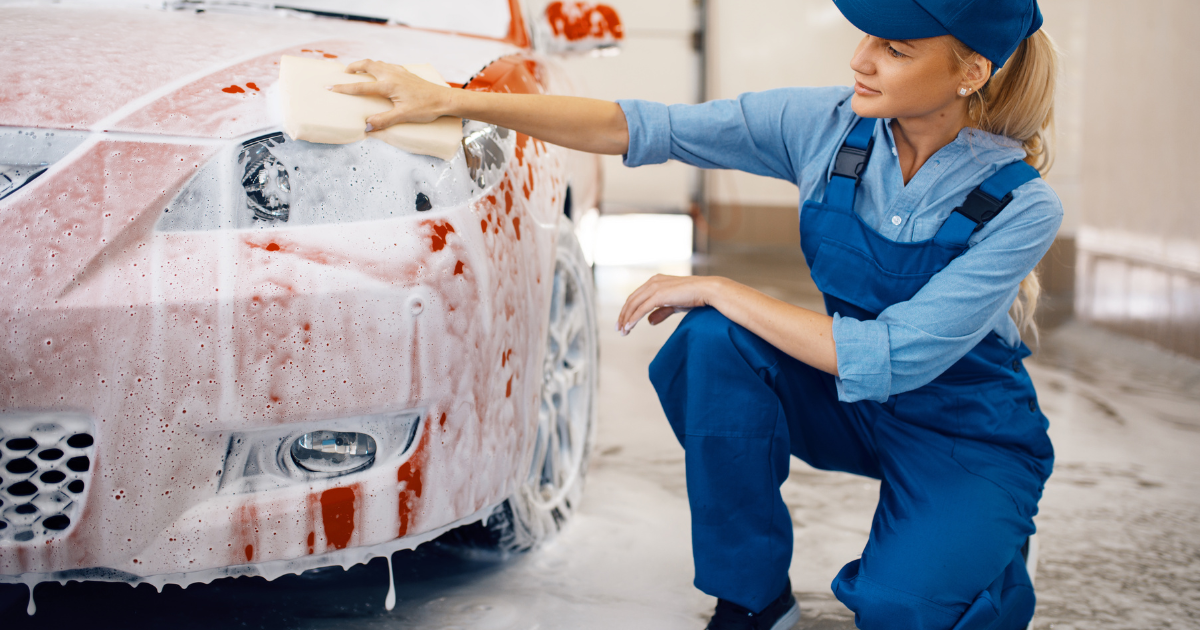How to Clean Foggy Car Headlights

In today’s DIY I will go over how to clean foggy car headlights. The efficiency of car headlights can be truly appreciated when you drive during the night, or when the visibility is poor on the roads. Many times, you may remember to change the lights when they have burned out, but do you know that cleaning them regularly is very important to keep them in proper working conditions? When they get foggy or dirty, you have to get them cleaned as quickly as possible. Else, they wouldn’t serve the purpose for which they were installed.
When do you know that your headlights are foggy and need cleaning? Cloudy headlights emanate a lot lesser light than before. When they become foggy, they also give out a yellowish light. When you notice these clues, it is an indication for you to clean the foggy headlights.
Though headlights these days are made from a durable type of plastic known as polycarbonate, they still get damaged due to many reasons. These include wear & tear, extended usage, exposure to the UV rays of the sun and more. In the earlier days, headlights were made of glass, and it was quite challenging to clean them, because glass was prone to scratches and damage. Thankfully, the plastic headlights of today are far more durable and easy to maintain as well.
How to Clean Foggy Car Headlights
– the process
- You have to inspect the headlights closely to understand how to clean them effectively. If the damages are beyond repair, any amount of DIY methods wouldn’t work on them. You will have to contact a professional to get them sorted.
- Sometimes, if the headlights are very dirty, it becomes difficult for you to examine the damage in them. In this case, you have to wash them with warm water and car wash soap to remove the dirt on them. Use a dry cloth to wipe them dry, before you can proceed to the next steps.
- Check if the surfaces of the headlights have yellowed or become hazy. This will help you decide the further course of action for cleaning them. If these can be cleaned by yourself, you will proceed to the next steps. Else, it is recommended to get these checked by an expert.
- Apply painter’s tape on the edges of the headlights. This will protect the area that need not be worked upon.
- Wet the headlights with a spray bottle containing water, and use a course grade of sandpaper to buff out the headlights (1500-grit is a good choice). Since you have already taped the edges around the headlights, you don’t have to worry about buffing out the car’s paint. For a better sanding effect, rub the headlights with some rubbing alcohol and allow them to dry before you apply the sandpaper on them.
- Now, use a finer grade of sandpaper (2000-grit is a good choice) and repeat the process that you followed with the coarse sandpaper. Keep sanding until you notice that the headlights have turned soft and shiny finish.
- Use a buffing compound (aluminum-based is the best) to clean the foggy headlights. If these compounds are very costly, you can use plain blue toothpaste also for this purpose. Apply the buffing compound on a soft, microfiber cloth.
- Rub this cloth over the headlights in a circular motion. You have to first rub thoroughly in one small area before moving to another area, thereby covering the entire surface area of the headlights. If you find this a tiring activity, you can also apply the buffing compound directly on a foam pad, and buff the headlights using a hand drill set at very gentle pressure levels.
- Keep buffing until you notice that your headlights have become bright and shining. Test the lights against a garage wall to check the brightness. Usually, you will need about three layers of buffing compound to clean foggy headlights.
- The next step is to maintain the clarity of your headlights for a long time. For this purpose, you can consider applying a plastic adhesion promoter over the lights. You can also apply 2 or 3 layers of automotive clear coats on the headlights to extend their longevity and performance.
Cleaning headlights using WD-40
If you invest in a WD-40 multi-use product, you can clean your foggy headlights easily and frequently. It doesn’t take a lot of time when you use this, and your headlights & taillights are back to bright & shiny again. Here are the steps you can follow for this:
- Use a clean & dry rag to wipe away the dust and grime on the headlights. This step is very important, because you want your headlights to be absolutely clean before you proceed to the next steps.
- Apply WD-40 generously over a soft, microfiber cloth. Rub this cloth gently and uniformly all over the headlights. Apply very gentle pressure and remember to cover every nook and cranny of the headlights. If you intend to clean your taillights, you can then proceed to repeat the same process over them as well.
- Dip a sponge in a solution of warm soap and water. Rub this sponge over the headlights thoroughly to get rid of all the dirt and WD-40 residues from the headlights. Clean all the areas of the headlights, and proceed to do the same for the taillights as well.
- After cleaning with soapy water, use a soft, clean & dry microfiber cloth to dry the headlights. Give them ample time for drying, as lights with streaks or watermarks can get foggy soon.
Some general tips
- Make a paste using equal parts of baking soda and vinegar. Apply this over the headlights, and scrub thoroughly using a soft sponge. Rinse and dry completely to remove the fogginess easily. You can replace this mixture with a simple, white toothpaste or lemon juice.
- For mild dirt marks, you can try spraying car wax, or bug & tar remover on the headlights. Leave it for a few minutes, before wiping them clean with a soft cloth.
- Apply some plastic polish on the headlights and gently rub it with a soft cloth. After a few minutes, use a clean cloth to wipe clean the excess polish marks if any, to get back the shine in the headlights quickly.
- Applying damp dryer sheets on the headlights, and then rinsing & drying them completely will also get rid of fogginess quickly.
